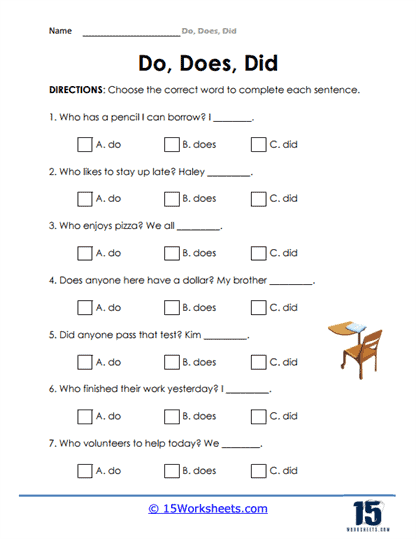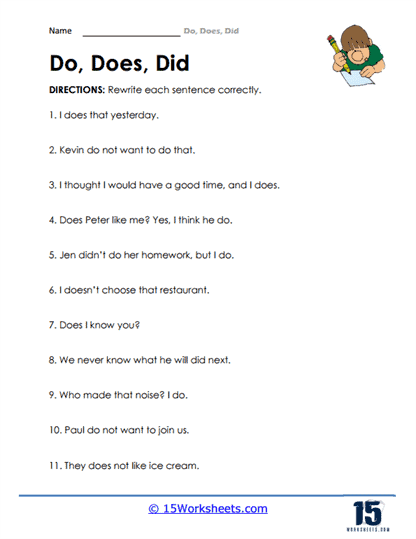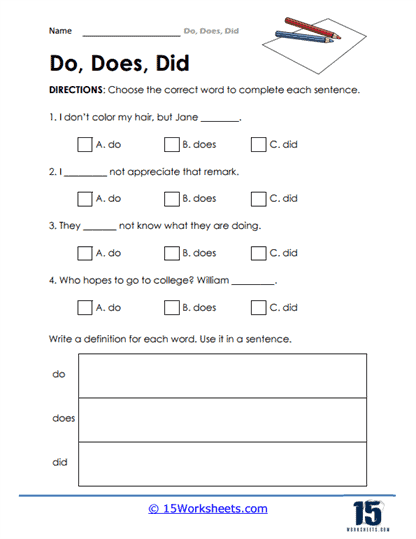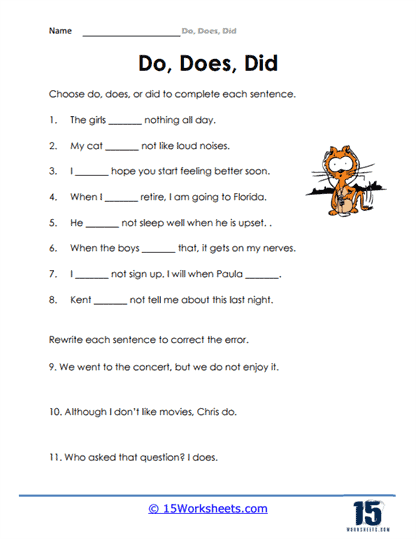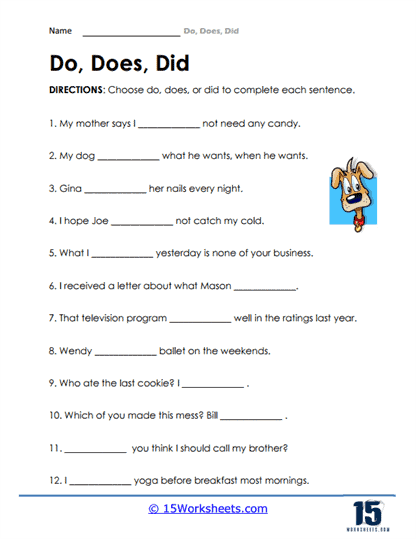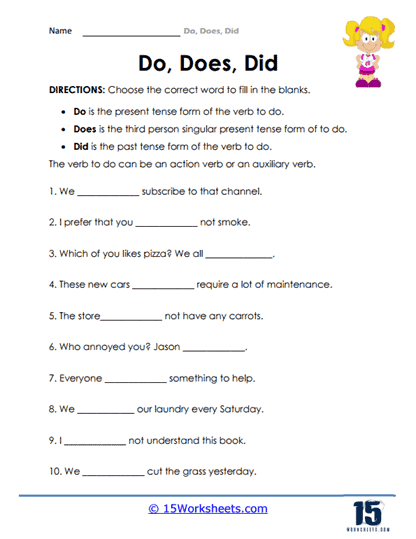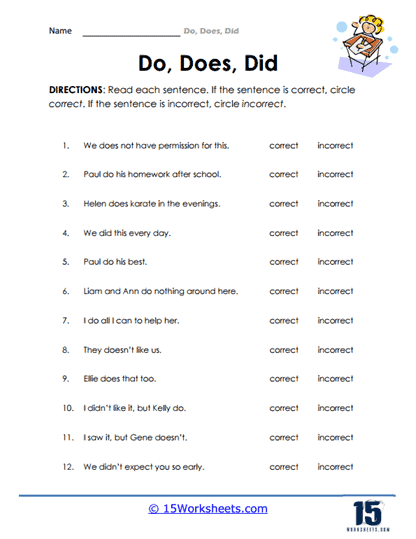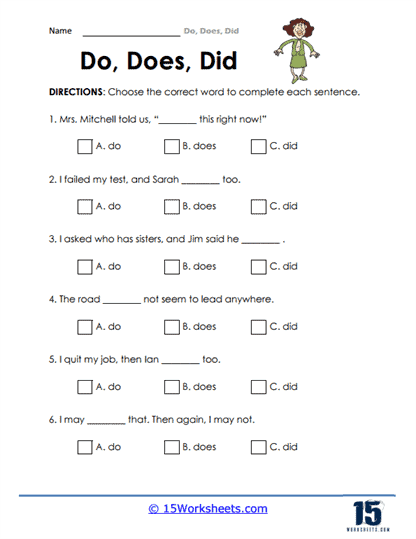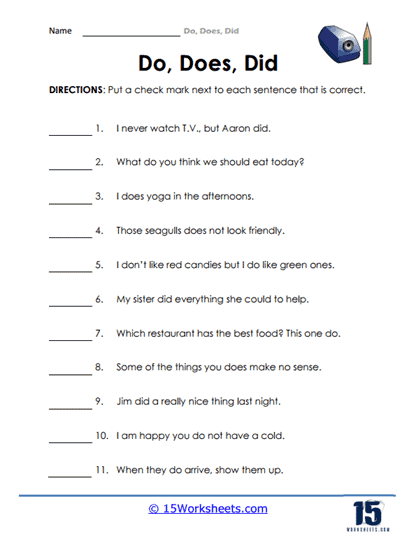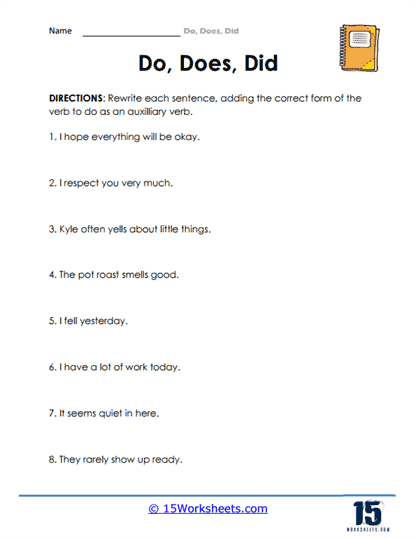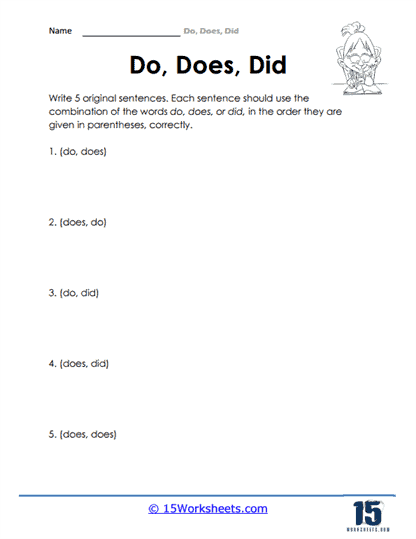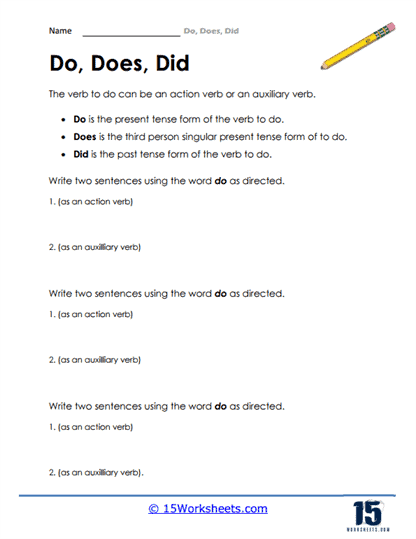Do, Does, Did Worksheets
All About These 15 Worksheets
These “Do,” “Does,” “Did” worksheets are designed to help students understand and practice the use of these auxiliary verbs in English. These verbs are used to form questions, negations, and emphasis in sentences and are an essential part of English grammar.
These worksheets typically include a variety of exercises to help students identify and use “do,” “does,” and “did” correctly. Some examples of these exercises include:
- Fill-in-the-blank exercises – Students complete sentences by adding the correct form of “do,” “does,” or “did.”
- Sentence transformations – Students rewrite sentences using a different form of “do,” “does,” or “did.”
- Matching exercises – Students match questions with the corresponding answers using “do,” “does,” or “did.”
- Writing exercises – Students write their own sentences using “do,” “does,” or “did.”
In addition to these exercises, some of these worksheets on “do,” “does,” and “did” may also include explanations and examples of how these auxiliary verbs are used in different types of sentences, including present simple, past simple, and present continuous tenses. These worksheets are ideal for teachers to give to their students as an introduction to the topic before moving on to the other worksheets in this collection which require further knowledge and mastery on the usage of “do”, “does”, and “did”.
Through these worksheets, students will:
- Learn to use “do”, “does”, and “did” correctly in sentences;
- Utilize “do”, “does”, and “did” in sentences to transform their verb tenses;
- Distinguish whether “do”, “does”, and “did” are used correctly or incorrectly in sentences;
- And create their own sentences using “do”, “does”, and “did”.
Overall, these worksheets on “do,” “does,” and “did” provide students with an opportunity to practice and reinforce their understanding of these important auxiliary verbs. By using these worksheets, students can improve their ability to communicate more precisely and accurately in English and become more confident and effective speakers and writers.
How do we use “Do”, “Does”, and “Did” correctly in sentences?
“Do,” “does,” and “did” are auxiliary verbs in English that are used to form questions, negatives, and emphatic statements. Here’s how they are used:
- “Do” is used with plural subjects and “I” and “you” to form questions, negatives, and emphatic statements in the present simple tense. For example:
- Question: Do you like pizza?
- Negative: I don’t like mushrooms on my pizza.
- Emphatic statement: I do like pepperoni pizza.
- “Does” is used with singular subjects other than “I” and “you” to form questions, negatives, and emphatic statements in the present simple tense. For example:
- Question: Does he play guitar?
- Negative: She doesn’t eat meat.
- Emphatic statement: He does know how to swim.
- “Did” is used to form questions, negatives, and emphatic statements in the past simple tense for all subjects. For example:
- Question: Did they go to the party last night?
- Negative: He didn’t finish his homework.
- Emphatic statement: I did see that movie last weekend.
When using “do,” “does,” or “did,” it’s important to make sure the subject and auxiliary verb agree in number and tense. In addition, when forming questions with these auxiliary verbs, the subject and auxiliary verb are often inverted. For example:
- Statement: You like ice cream.
- Question: Do you like ice cream?
Overall, understanding the correct use of “do,” “does,” and “did” is important for effective communication in English, and students should practice using them correctly in their speaking and writing to improve their language proficiency.




